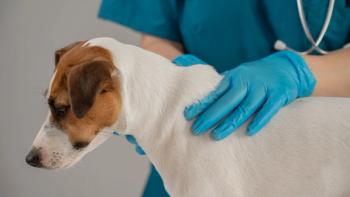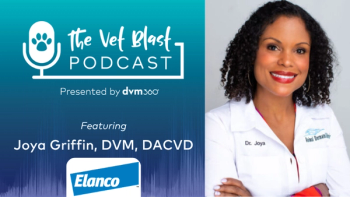
How I treat Pseudomonas otitis (Proceedings)
The causes of otitis externa can be categorized into predisposing, primary and perpetuating factors.
The causes of otitis externa can be categorized into predisposing, primary and perpetuating factors. Predisposing factors place a patient at risk of developing otitis while primary factors directly incite the problem. Perpetuating factors prevent the resolution of a problem once it has been established. Predisposing factors include environmental conditions (high humidity and ambient temperature), anatomic variations (stenotic canals, hairy canals), and systemic diseases (diabetes mellitus, hyperadrenocorticism). Primary factors include parasites (Otodectes cynotis ), foreign bodies (plant material, tumors), hypersensitivities (atopy, food allergy), keratinization abnormalities (primary seborrhea, hypothyroidism), autoimmune diseases (Pemphigus foliaceus), and juvenile cellulitis. Perpetuating factors include infectious agents (bacteria and yeast), pathologic changes in the ear canal (proliferative tissue), and iatrogenic factors (inappropriate treatment).
Pseudomonas aeruginosa is one of the most difficult infectious agents to deal with in otitis cases. It is often resistant to many antibiotics, produces large amounts of exudate, and can cause significant ulceration and pain in the ear canal. Successful resolution of Pseudomonas otitis will require thorough and often repeated cleaning of the ear canal, topical antibiotic or disinfectant treatment, and many times systemic antibiotic therapy. Once the infection has been cleared, it is important to keep the environment within the ear canal unfavorable for the growth of Pseudomonas. This requires control of inflammation (topical corticosteroids as well as addressing any underlying diseases), keeping the ear canal clean and dry, and keeping the pH in the canal low.
Removing debris and purulent exudates from the ear canal is extremely important. Exudate can cause more inflammation, can block contact of the topical antibiotic with the bacteria, and can inactivate some antibiotics. If the ears are extremely swollen, ulcerated, or painful, thorough ear cleaning/flushing may need to be postponed for a week or longer while anti-inflammatory and anti-infective therapy is begun. Many cases of Pseudomonas otitis externa also have otitis media due to rupture of the tympanic membrane. These dogs should have their external and middle ears flushed while under general anesthesia to allow complete cleaning of the middle ear cavity. Cleaning solutions useful for helping to remove purulent exudate include tris-EDTA, Otifoam® cleanser, Epi-otic®, chlorhexidine containing flushes, and many others. Ear bulb syringes are useful for flushing out gross debris, then for removing debris from the deeper aspects of the ear, I like red rubber feeding tubes attached to a syringe. Video otoscopy is particularly useful for cleaning and visualizing the deeper parts of the horizontal canal, the tympanic membrane, and the middle ear cavity. Flushing with copious amounts of water or saline to rinse out any residual ear cleaning solution may be helpful in preventing ototoxic reactions. Potential adverse effects of deep ear cleanings include vestibular signs, hearing loss, and Horner's syndrome. Clients should be advised of this possibility; however, they should also be advised that leaving the infection untreated can have the same or more serious consequences. Once the initial cleaning has been done, clients should be taught how to do ear cleaning at home as part of the therapeutic plan.
Culture and sensitivity testing is recommended to guide antibiotic selection for both systemic and topical therapy. One should keep in mind that some topical antibiotics that are reported as resistant may still be effective due to the much higher concentrations achieved with topical application. Topical antibiotics that may be effective against Pseudomonas include gentamicin, amikacin (dilute injectable 1:1 with saline, can add dexamethasone SP), neomycin (usually as the combination product cortisporin- with polymyxin B and hydrocortisone), tobramycin (ophthalmic), enrofloxacin (injectable enrofloxacin mixed with dex SP and saline), and polymyxin B. Silver sulfadiazine (dilute the cream 1:10 with water) and acetic acid (2%) also have good efficacy against Pseudomonas. Use caution with acetic acid in an inflamed ear. Tris-edta has anti-Pseudomonas activity as well as rendering the bacteria more susceptible to the action of other antibiotics so can be useful as a pre-treatment or on its own. In some resistant cases, ticarcillin may need to be used topically, but this must be reserved as a last resort. The three gram bottle can be diluted with 40 ml of sterile water and kept refrigerated for a month. My normal dose is 0.5 – 1 ml in each ear 2-3 times a day.
Systemic antibiotic therapy for Pseudomonas is indicated for severe chronic cases, when otitis media is present, and for ears with proliferative changes. The choice of systemic therapy should always be based on results of culture and sensitivity testing. Fluoroquinolones are the only oral antibiotic therapy useful for Pseudomonas. Unfortunately, many isolates are resistant to one or more of the fluoroquinolones. Resistance to enrofloxacin is not uncommon. Marbofloxacin and ciprofloxacin may be effective still in some cases that are resistant to enrofloxacin, but resistance to all fluoroquinolones seems to develop rapidly. Aminoglycosides may have to be used parenterally, but careful monitoring of renal function is advised. If oral antibiotics are not an option, intensive cleaning and topical antibiotic therapy (potentially with two different antibiotics) is recommended. The use of parenteral antibiotics such as ceftazidime, carbenicillin, imipenem is controversial as these drugs are used to treat serious systemic infections in people.
How long to treat varies with the severity of the otitis. Otitis externa with no chronic changes and no middle ear involvement may resolve in several weeks with topical therapy alone. More severe cases will require topical and systemic therapy for 2-4 weeks. If proliferative change or otitis media is present, one month or longer may be required to resolve the infection. Culture and sensitivity testing should be repeated if improvement is not being seen or if initial improvement is followed by worsening.
Once the infection has resolved, the health of the ear should be maintained with anti-inflammatory topical therapy, acidifying/drying therapy, and routine cleaning. Any underlying predisposing and primary factors should be controlled as much as possible. Bur-otic HC®, Borofair® (domeboro's solution with acetic acid), Malacetic® (boric acid, acetic acid), Epi-otic advanced®, and other products should be applied 1-3 times a week as needed. If continued anti-inflammatory therapy is needed, hydrocortisone or fluocinolone (Synotic®) may be needed 1-3 times weekly.
Newsletter
From exam room tips to practice management insights, get trusted veterinary news delivered straight to your inbox—subscribe to dvm360.





